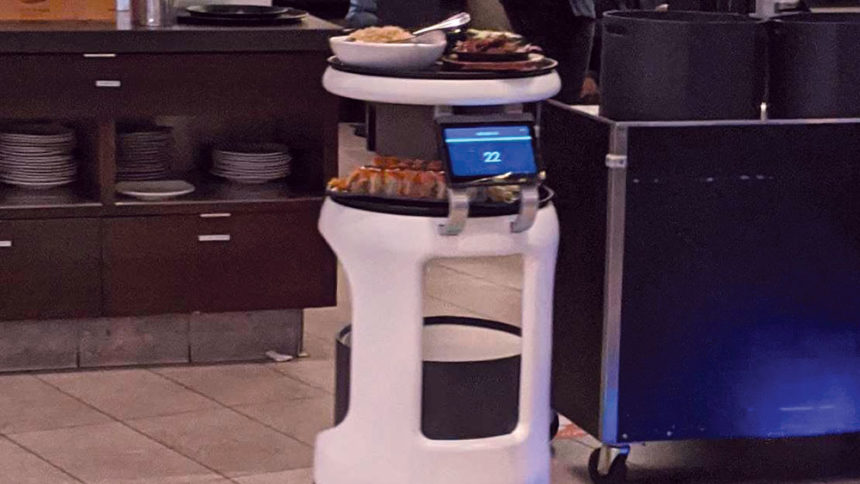
In the era of the Great Resignation, long-term care providers must take a comprehensive look at the ways technology applications, including robots and automation, can alleviate workforce challenges, according to panelists at June’s LeadingAge Collaborative Care Tech Summit.
Two years ago, operators mostly prioritized fall prevention and medication management, Direct Supply Innovation and Technology Manager Justin Smith told attendees. But the pandemic bumped infection control and staffing to the top of the list. He said his company is winnowing down a list of 70-plus robotics solutions to find those with the best potential for the sector.
“The way to think about robotics is to think about the tasks you spend time on that are not adding value and how to wipe those out,” he said.
For Cypress Cove, a Florida life plan community, that was having dining employees run food and dirty dishes back and forth between the kitchen and dining area. The operator introduced Bear Robotics’ Servi robots, three-tiered food runners that make trips to and from the kitchen to deliver food and bus tables, allowing employees to remain in the dining area with residents.
“Staff are having to make far fewer trips between their section and the kitchen and are staying in their section to be more responsive and supportive of our residents,” said Joe Velderman, Cypress Living’s vice president of innovation. The move also reduced by 330 hours per week the tasks of front house culinary services employees. The savings were invested in wages.
Army Distaff Foundation Vice President of Development and Strategic Operations James Michels said one of his communities had used robotics to augment therapy with exoskeleton rehabilitative therapy — a bionic suit, of sorts. It addressed the needs of a resident who had a series of strokes, lost mobility and had became depressed.
From the July/August 2022 Issue of McKnight's Long-Term Care News





